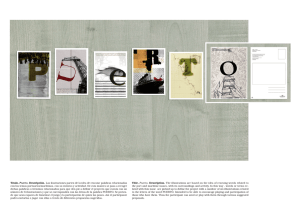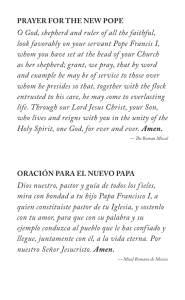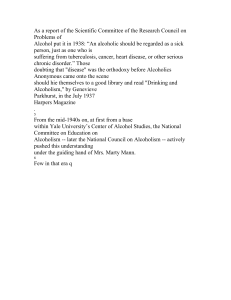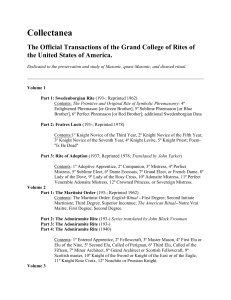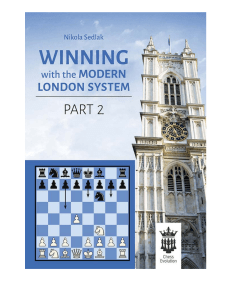Samuel Taylor Coleridge 1772-1834 Love ALL thoughts, all
Anuncio
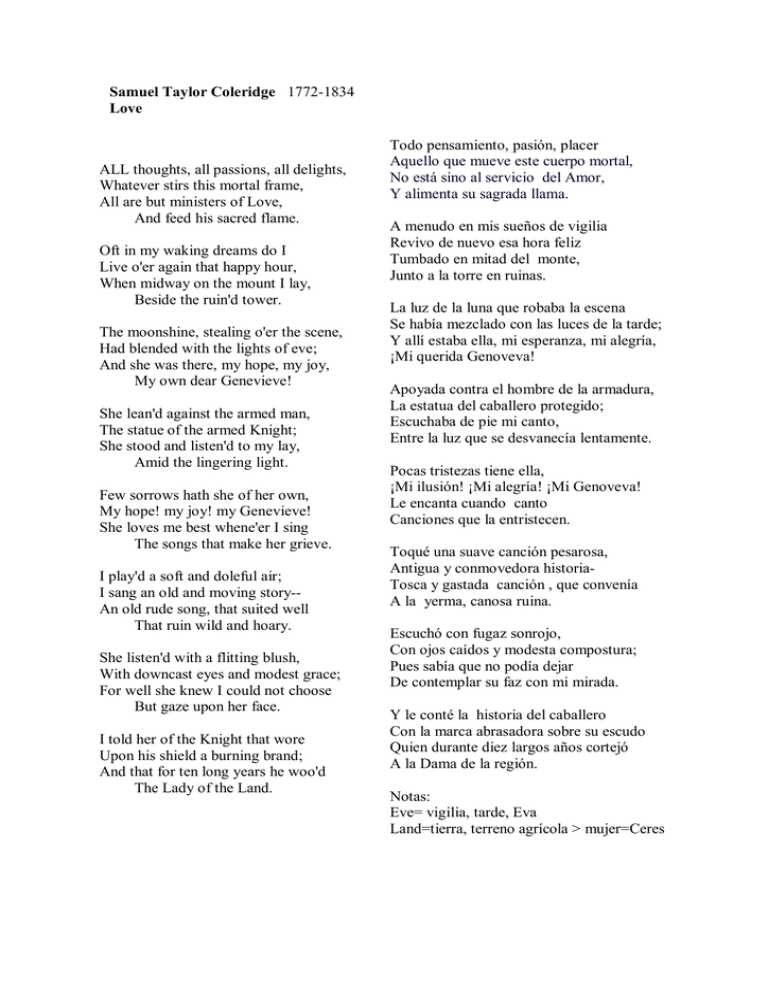
Samuel Taylor Coleridge 1772-1834 Love ALL thoughts, all passions, all delights, Whatever stirs this mortal frame, All are but ministers of Love, And feed his sacred flame. Oft in my waking dreams do I Live o'er again that happy hour, When midway on the mount I lay, Beside the ruin'd tower. The moonshine, stealing o'er the scene, Had blended with the lights of eve; And she was there, my hope, my joy, My own dear Genevieve! She lean'd against the armed man, The statue of the armed Knight; She stood and listen'd to my lay, Amid the lingering light. Few sorrows hath she of her own, My hope! my joy! my Genevieve! She loves me best whene'er I sing The songs that make her grieve. I play'd a soft and doleful air; I sang an old and moving story-An old rude song, that suited well That ruin wild and hoary. She listen'd with a flitting blush, With downcast eyes and modest grace; For well she knew I could not choose But gaze upon her face. I told her of the Knight that wore Upon his shield a burning brand; And that for ten long years he woo'd The Lady of the Land. Todo pensamiento, pasión, placer Aquello que mueve este cuerpo mortal, No está sino al servicio del Amor, Y alimenta su sagrada llama. A menudo en mis sueños de vigilia Revivo de nuevo esa hora feliz Tumbado en mitad del monte, Junto a la torre en ruinas. La luz de la luna que robaba la escena Se había mezclado con las luces de la tarde; Y allí estaba ella, mi esperanza, mi alegría, ¡Mi querida Genoveva! Apoyada contra el hombre de la armadura, La estatua del caballero protegido; Escuchaba de pie mi canto, Entre la luz que se desvanecía lentamente. Pocas tristezas tiene ella, ¡Mi ilusión! ¡Mi alegría! ¡Mi Genoveva! Le encanta cuando canto Canciones que la entristecen. Toqué una suave canción pesarosa, Antigua y conmovedora historiaTosca y gastada canción , que convenía A la yerma, canosa ruina. Escuchó con fugaz sonrojo, Con ojos caídos y modesta compostura; Pues sabía que no podía dejar De contemplar su faz con mi mirada. Y le conté la historia del caballero Con la marca abrasadora sobre su escudo Quien durante diez largos años cortejó A la Dama de la región. Notas: Eve= vigilia, tarde, Eva Land=tierra, terreno agrícola > mujer=Ceres In 1799, Coleridge and Wordsworth stayed at Thomas Hutchinson's farm on the Tees at Sockburn, near Darlington. Here Coleridge wrote his ballad-poem Love, addressed to Sara Hutchinson. The knight mentioned is the mailed figure on the Conyers tomb in ruined Sockburn church. The figure has a wyvern at his feet, a reference to the Sockburn Worm slain by Sir John Conyers (and a possible source for Lewis Carroll's Jabberwocky). The worm was supposedly buried under the rock in the nearby pasture; this was the 'greystone' of Coleridge's first draft, later transformed into a 'mount'. The poem was a direct inspiration for John Keats' famous poem La Belle Dame Sans Merci The first verse of Love is a symbol for what the romantics stood for. Thoughts, passions, and delights occupy the minds of those types of individuals who are driven by dreams and ideals. Reminiscent of Shakespeare´s language; “this mortal frame” reminds us of “this mortal coil” of Hamlet´s soliloquy, but whereas Hamlet is racked with indecision and the morbid pain of death, Coleridge is feeling fully alive and trembling (“stirred”) at the thought of love. For Coleridge, love is the master of human endeavour, directing all action. “Sacred flame” introduces a religious element into his devotion. He was at this time married to the love of his life, Sarah Hutchinson. In the second verse, the ballad takes on the form of a memory of something which Coleridge constantly daydreams about - a moment of tender love between himself and his bride. The ruined town may be the old church at Sockburn where Coleridge spent happy years with his friend William Wordsworth. The imagery is near Gothic in nature: the old tower, a mount which could be a grave, and moonlight shining down on the scene, but this does nothing to detract from the poet´s happiness. In fact, he cleverly uses the somber surroundings as a contrast, further emphasizing his joy. The choice of Genevieve as a name is deliberate. It might recall Saint Genevieve, a girl of a modest, chaste nature. The ballad describes the way Genevieve is won over to love by listening to the words of the song the poet sings to her, about a brave knight conquering the heart of a maiden.There are two tales being told, the one of the knight who saves the “Lady of the Land” by murdering those who threaten her with rape, later to be nursed by her in a cave; the second is the response to the tale of Genevieve herself. Coleridge is at pains to emphasize Genevieve´s fine qualities, even though she is out so late at night and clearly flirting with him. To the poet, she is bashful and gracious, meek and virgin, and produces a “fitting blush” just at the right moments. Verse ten echoes the seventh verse with obvious repetition to emphasize this point. In fact, it is Coleridge who is being over presumptuous by gazing upon her “too fondly” but for this he is forgiven. It is also worth noting the condition of the knight´s mind – “the scorn that crazed his brain” – which the loving care of his lover alleviated, helping to make the madness go away. Coleridge himself suffered from depression and suicidal instincts, perhaps brought on by his opium addiction. Genevieve is moved with pity, weeping with delight, she rushes to crush him to her breast, perhaps not the action of a chaste maiden, but someone who is “artfully” seeking a physical connection, “that I might rather feel than see the swelling of her heart.” The poem ends as it begins, on a happy note. It was perhaps written during an optimistic time in Coleridge´s life when he was rejoicing in his “bright and beautiful bride,” and the reader can only feel pleased for him.
